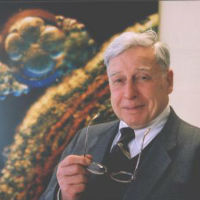
After leaving school towards the end of WW2, Sir R.G. Edwards, born into a working class family from Yorkshire, of which he was particularly proud, served in the British Army for four years of war service, before studying Agricultural Science and Biology at Bangor University. From there, he went to the Institute of Genetics in Edinburgh University, where he obtained his PhD in 1958. He came to The Physiological Laboratory at the University of Cambridge in 1963 and was a fellow of Churchill College Cambridge. In Cambridge, Sir R.G. Edwards studied human fertilization. His work, alongside Patrick Steptoe, led in 1978 to the first baby born after “test tube fertilization”- offering hope to couples diagnosed as infertile.
The Nobel Prize in Physiology or Medicine 2010 was awarded to Robert G. Edwards "for the development of in vitro fertilization".
http://www.nobelprize.org/nobel_prizes/medicine/laureates/2010/edwards-bio.html
At the R.G. Edwards display, you can get a sense of the scientific, ethical and social challenges posed by fertilizing an egg ‘in vitro’, and see how the media portrayed the monumental scientific advances made by R.G. Edwards and colleagues in studying human fertilization and early development.
Photograph courtesy of Lennart Nilsson photography Ltd and reproduced with permission from Lars Hamberger and the family of R.G. Edwards

